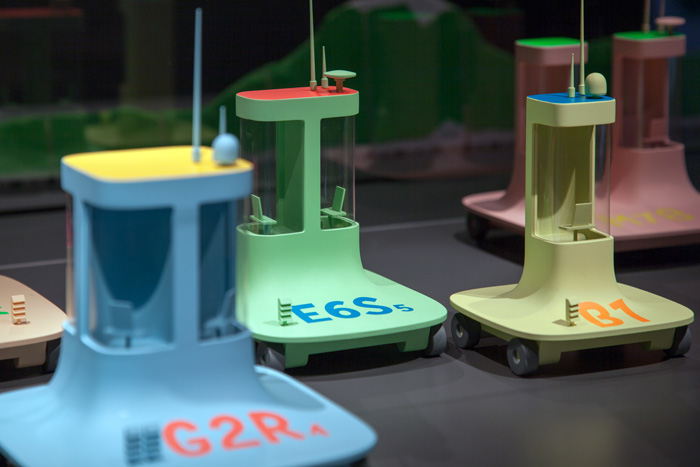Anthony Dunne & Fiona Raby are an eccentric designer duo based in the U.K. Most of their work revolves around challenging cultural, social, and ethical concerns regarding technology. Their projects are truly one of a kind and spur many discussions amongst designers. Some of their most notable work involves design fiction.
As described by Dunne & Raby, design fiction is a process of storytelling that raises questions about our world. An application of speculative and critical design, design fiction illustrates futures that reflect on different trends in biology, architecture, anthropology, and technology at large. By combining concept art and a provocative storyline, design fiction stimulates new ideas for how things can be done–in ways that most of us would never imagine. For example, Dunne & Raby illustrate a future version of the United Kingdom–called “United Micro Kingdoms”–where four nations with varying political and technological views reside. One of these civilizations has embraced an authoritarian technocracy where people are tracked and monitored in high-tech “digicars.”

This totalitarian nation is controlled by market forces and views nature as a gift-basket to consume. It provides its citizens with an illusory myriad of choices and may seem eerily similar to modern times. Another nation is a communist state built on a massive 75-carriage train with constantly moving landmasses.

Design fiction can offer warnings about the future or idealist versions of a Utopian society. As an authoritarian state, the aforementioned train exemplifies the dangers of communism: Despite everyone living in luxury, they are perpetually trapped on a moving train. Ideas like this, although off-the-wall, can provide a great deal of value that other designers fail to create. Contemporary trends are much too concerned about the sex-appeal of a design and its accessibility to the public. While good design should improve our lives in a practical sense, great design should force us to question the way we live. Dunne & Raby exemplify these characteristics in their recent book, Speculative Everything: Design, Fiction, and Social Dreaming (2013). The prose is academic (it is published through the MIT Press), but the content is extraordinary. Unlike the consumable pulp we are exposed to daily, this refined media is refreshing. Although it’s a new space, design fiction may be a valid design method. I think this approach is necessary for society to move forward. It offers dreams that our minds, numbed to mediocrity, fail to produce. Design fiction combines our innate love of stories with pressing issues of our times to define a future that we could build. Without this vision, no progress could be made.

